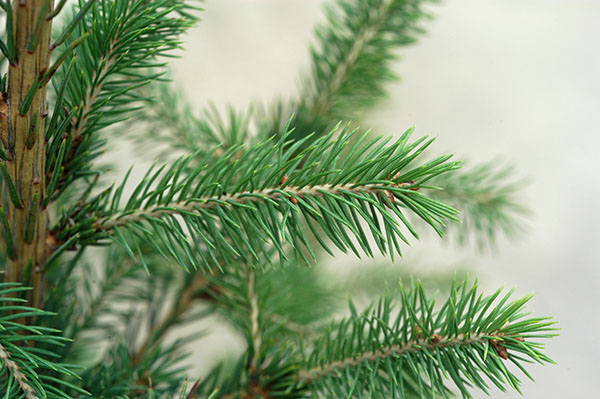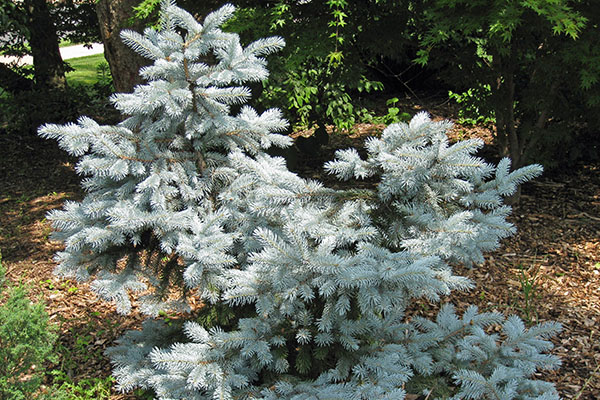Picea glauca
White Spruce
Labrador to Alaska, Montana to New York. High North.
A broad, dense pyramid in youth, becoming a tall, fairly narrow, dense spire, compact and regular, with horizontal to ascending branches.
Cool, alluvial soils, and full sun. Found near stream banks and rich woods.
Picea glauca has a broad dense pyramidal habit in youth, becoming a tall, fairly narrow, dense spire, compact and regular, with horizontal to ascending branches. Generally around 60 feet tall. Mature bark is flaky or scaly, ashy brown, and freshly exposed layers are somewhat silvery. Leaves are persistant for several years and crowded on the upperre side of the stem. Leaves are pale to dull blue-green, .5 to .75 inches long, incurved, ending in an acute or round horny point. Flowers are monoecious; male flowers are red changing to yellow; females are purple. Cones are pendulous, 1 to 2.5 inches long, light brown with thin scales. Useful as a specimen, mass, hedge, or windbreak. Tolerates drought, heat, cold, high wind, and crowding. Native to the northern states of the United States.
Evergreen; pale-blue to green in color.
Buds are chestnut brown in color and scaled, keeled but not resinous.
Thin, ashy-brown and flaky.
Staminate flowers are red or yellow, Pistllate flowers are purple.
Cones - cylindrical and blunt, pale brown when ripe. Green to purplish cones when young.
Cuttings collected in July rooted 84-90% and rooted better when taken earlier or later; treatment with IAA did not affect rooting
'Caerulea' - Silvery gray-blue needles, 6 feet by 3 feet.
'Cecilia' - Blue needles, globose, 18 inches high.
'Echiniformis' - Gray-blue, thin, short needles, low cushion habit, 12 inches.






